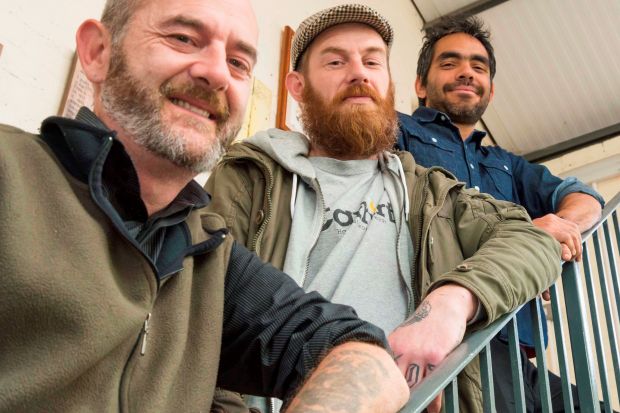A Brighton PhD student is creating an exhibition with the city’s homeless as a way of “generating knowledge for social change”.
Bruno De Oliveira came from Brazil to the University of Brighton in 2007 to study psychology and then went on to a master’s in community psychology and now a doctorate.
“Even when the coverage is not totally negative,” he said, “the media are very naive and arbitrary in talking about the homeless.”
He added that affluent Britain’s general treatment of rough sleepers could be seen as “a form of violence”, with councils across the country “threatening to fine the homeless up to £1,000 – this is an example of how society fears and blames the homeless when what we really need are ways to bring them and society closer together, to bring the two into dialogue with each other”.
In order to achieve his goal of “bringing people in to talk about the homeless, Mr De Oliveira has joined forces with the homelessness charity Emmaus Brighton and Hove as well as University of Brighton art students who have volunteered to offer skills workshops.
He also enjoys the support of the Community University Partnership Programme, which is committed to “tackl[ing] disadvantage and promot[ing] sustainable development”.
Meanwhile, Mr De Oliveira has already found five Emmaus residents as “experts in the field and co-researchers”, some of whom already have artistic experience. One called Matt said he has “done all sorts of art and graphic design” and is “into textile design” but hopes to work in furniture making or tattooing once he leaves Emmaus.
After a smaller exhibition as part of his master’s, Mr De Oliveira is now reaching out to other charities with a view to finding about 10 homeless people for an exhibition as part of the Brighton Fringe Festival next May.
Much of the exhibition will use the “photovoice” technique which combines photography with commentary designed to promote discussion on issues such as the 30-year gulf in average lifespan between the homeless and the rest of the population.
Mr De Oliveira hopes the exhibition will not only provide “a better understanding of homelessness but bring social change and emancipation for the people I am working with…I want to get away from the idea of power owned by academics and move towards collaboration with the community. It can be a very effective way of generating knowledge for social change.”
Register to continue
Why register?
- Registration is free and only takes a moment
- Once registered, you can read 3 articles a month
- Sign up for our newsletter
Subscribe
Or subscribe for unlimited access to:
- Unlimited access to news, views, insights & reviews
- Digital editions
- Digital access to THE’s university and college rankings analysis
Already registered or a current subscriber? Login




